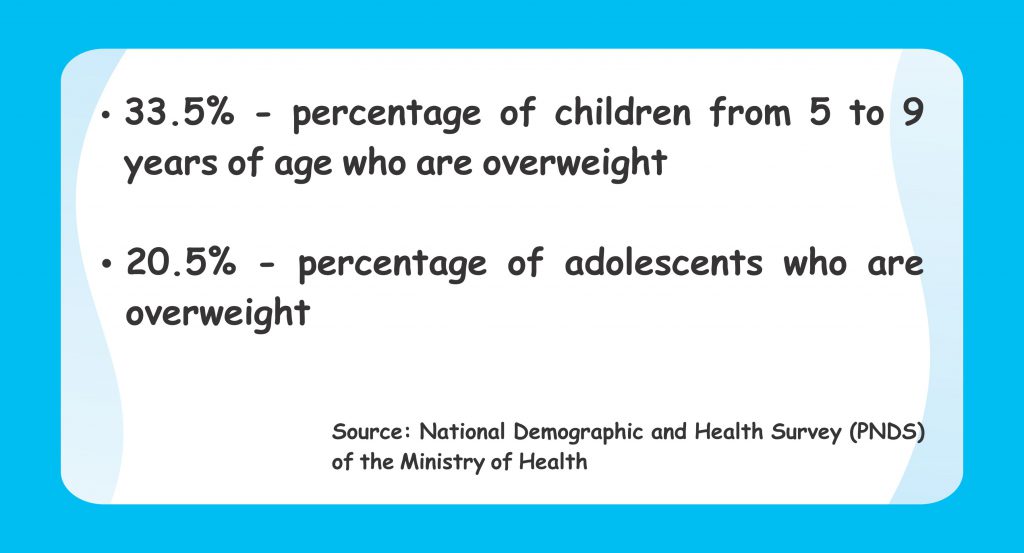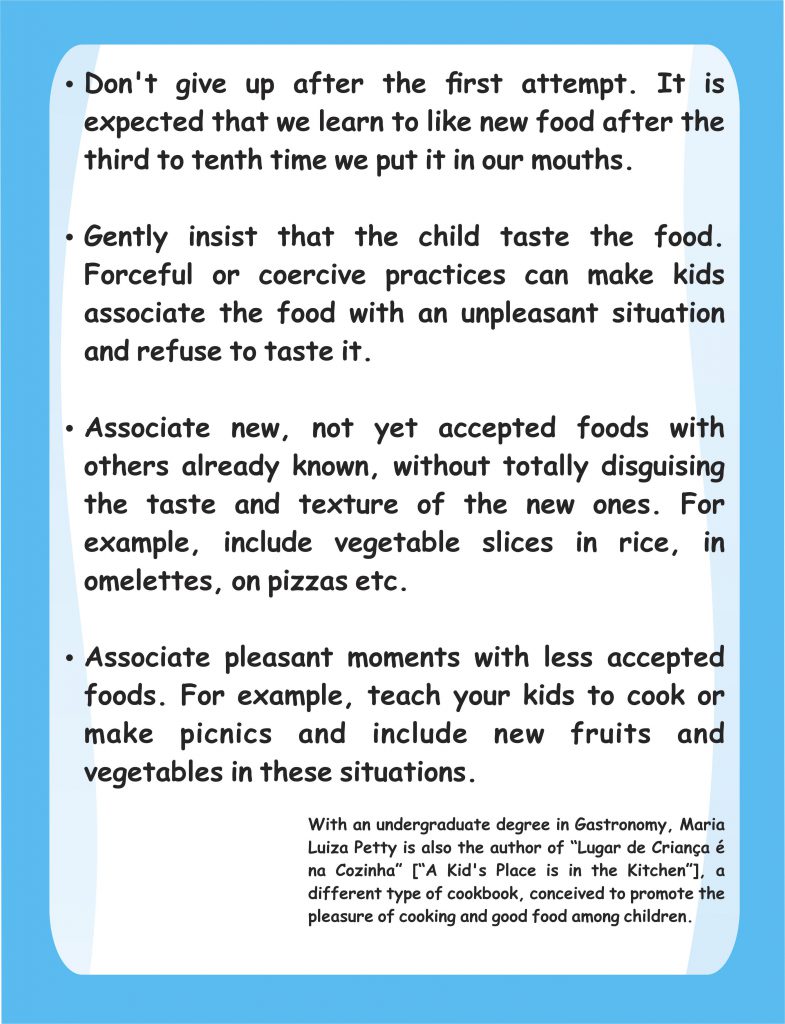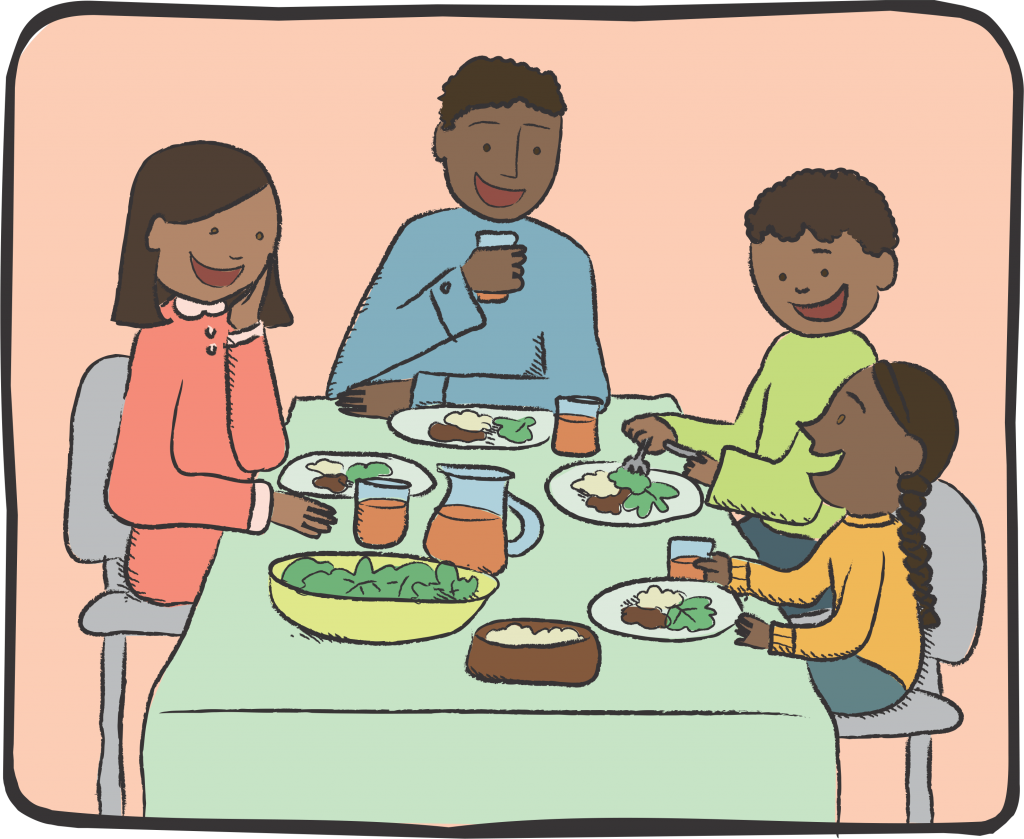At the beginning of this year, the Commission on Ending Childhood Obesity report of the World Health Organization (WHO) expressed in numbers what pediatricians already see as the main childhood disease of modern times: Obesity.
According to the document, at least 41 million children under 5 years of age are obese or overweight. Marketing of unhealthy food and drinks is pointed to as an important factor which drives the problem, especially in the developing world.

In a little over two decades, from 1990 to 2014, 10 million children under 5 years of age entered the overweight range, according to the report. Furthermore, the study warns that among the non-communicable diseases, obesity is the one with the greatest potential to reverse health advances that have contributed to a higher life expectancy of the population.
In an attempt to change this situation, the report made six recommendations to governments, ranging from prenatal care to comprehensive programs that promote intake of healthy foods, whether through a taxation on sugar-sweetened beverages, food marketing curbs or the creation of healthier school environments – with standards for school meals – and incentives to exercise during physical education.
The WHO report’s numbers refer to the problem as a global epidemic, justifying effective government action. In Brazil, overweight and obesity are very frequently found in all income groups and in all Brazilian regions after 5 years of age. The data were obtained from more than 188,000 people by the Family Budget Survey of the Brazilian Institute of Geography and Statistics (IBGE), which analyzed the anthropometry (body measurements, such as weight and height) and the nutritional state of children, adolescents and adults in Brazil.
The increase in purchasing power of the poorest families over the last two decades, and the consequent increase in consumption of processed products (such as soft drinks, cookies and ready-to-eat foods) are mentioned in the document as one of the factors for the increasing rate of obesity in this population group. In addition, for those wanting to spend less, breads and pastas are cheaper.

Doing Our Part
As one would expect, the topics of Health and Food are addressed in three of our projects: Living Well, Adults and Children. Learning about one’s own body, identifying and consuming healthy foods in adequate quantities, engaging in physical exercise, behaving well at the table and correcting poor hygiene habits are among the basic principles passed on to children and their relatives.

Family involvement in building children’s eating habits is fundamental. This is what nutritionist Maria Luiza Petty stresses. According to her, the first essential step for children to enjoy eating healthy foods is that they be available for family consumption. “Fruits, greens and vegetables must be on the table and eaten by the parents. When children get used to seeing their parents eating these foods, they also start eating them, sooner or later,” she says.

Other actions must be taken during meals. “For children to be able to learn from their parents, they need to see them eating and, for this, it is essential that the family eat together and that, during this time, TVs, cell phones, tablets etc. are turned off,” says the nutritionist.
Besides setting an example, “determining the kinds of foods to be eaten at home is the responsibility of the parents and they should not expect a child to see a cupboard filled with sweets, and choose to eat fruit,” says Maria Luiza, who holds a master’s degree and a doctorate in Child Nutrition from the Federal University of São Paulo. According to her, this is the major mistake made by adults with respect to children’s food. “Many parents expect their children to be conscientious, responsible, and even mature enough to make appropriate food choices, when this is simply not possible,” she adds.

Even when they do their homework well, it is common for many parents to have trouble ensuring that their children eat healthier food. For them, the specialist has some valuable tips:

Behind the Food
The central topic when the subject is obesity, eating may also involve elements that go beyond nutrition. This is the conviction of Juliana Gomes, a clinical psychologist, with a master’s degree in Sciences from the Federal University of São Paulo and a graduate degree in Food Disruptions from the Institute of Psychiatry of the University of São Paulo. “Food nourishes, gives pleasure, relates to the culture that surrounds that community and promotes social relations. Communion around the table strengthens emotional ties and enriches relationships,” she says.

According to her, parents, in general, are very happy to enjoy feeding their children, but they can make dangerous mistakes. “When they choose goodies to satisfy their children, since they don’t have much time together and don’t want to fight with them, parents are making a choice that can have health risks, if repeated daily. Food education requires parent involvement and time, but it is a fundamental part of life,” says Juliana.
Besides reproducing a family eating pattern, the way a child eats can also indicate other problems. “Eating in excess can also be a sign of anxiety. Children can use eating as a way to communicate something they are unable to verbalize. A common example is that of a child that lives in an unstable environment and seeks food as a way to feel comfort,” the psychologist says.
Obesity can also affect a child’s emotional behavior as a result of his/her physical appearance. In this case, parents should be on the lookout for certain types of behavior. “An obese child who suffers bullying can become withdrawn, avoiding social interaction, especially in the school environment. He/She appears insecure, shows little initiative and is very afraid of expressing him/herself, doing everything to avoid attracting attention. Other children react by becoming more aggressive, as a way to protect themselves and avoid attacks from classmates,” the specialist says.

The professionals interviewed were unanimous in stating that, from both the nutritional and psychological points of view, family involvement is, thus, a decisive factor in the success of any treatment, either in preventing or dealing with childhood obesity.